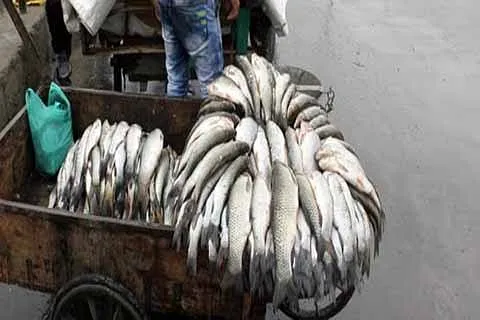As per estimates, world is losing endemic species at a faster pace due to various anthropogenic pressures. Our region is endowed with precious native flora and fauna, and some of the natural resources are unique this region. Among other native fauna, fish has been major concern for conservation biologists in our region as their population density and diversity has shown sharp decline over past decades. Globally, native fish fauna is at risk due to various environmental perturbations. For example, recent study estimated that water extraction for agriculture and domestic activities have put the native fish species of the Colorado River (USA) at risk. Our region is currently facing worst environmental crisis that has resulted in the decline of natural resources including fish. Population size of native fish fauna has reduced to a critical level and there is need of immediate steps from all stakeholders to take tangible actions. Recent fish kill in the river Jhelum has further rang the alarm bells among the general public as well as among the concerned authorities and various strategies have been suggested by different stakeholders for the better management of native fish fauna. It is high time that we should consider a robust ‘Native Fish Conservation Policy’ based on multi-dimensional approach as per modern technology. As I am currently implementing a national project on ‘Health Modelling of Native Fish Fauna’, I found it important to highlight some of the strategies which can be introduced to conserve native fish currently reeling under deep crisis of survival. I have mentioned some of the initiatives which are in addition to commonly followed strategies in the existing policy. The overarching aims of native conservation policy should be to prevent drastic decline of indigenous fish, restore and rehabilitate the naturally produced fish and to initiate policy for sustainable development of whole fishery resource in accordance with international norms.
Major initiatives to be taken:
The integrative and holistic approach is needed to conserve native fish species of this region. Furthermore, there is need to revamp ad-hoc monitoring policy and change it into more systematic monitoring that is most suited to current needs. The conventional monitoring is not suited to current needs as ecological baselines were not established by following ad-hoc policy.
New “smart” technology can bring the real difference in dealing with health based issues of native fish. Implementing and innovating new monitoring tools for initiating conservation strategies is the best way to start rescue operation. In recent past Liverpool Biologist, Lynne Sneddon has developed fish health monitor that has been under trial for the possible mass scale use.
The establishment of ‘Small Dams’ at various places throughout J&K that could act as fish nurseries and refuge, and will boost endemic fish fauna of this region. Environmental biologist and ecologists need to be consulted for the selection of these small dams at specific and feasible place. These will act as self-sustaining surrogate breeding ponds where from we can release fish into natural water bodies. However, care must be taken to know the negative implications (if any) before starting such type of intervention.
Establishment of Fish Kill Monitoring and Rehabilitation Services (FKMRS) and Disease Monitoring Cell (DMC) as suggested by me two years back (Greater Kashmir, 7th December, 2015) is important to keep vigil on the current status of fish kill, new emerging disease and other factors. The monthly report of these proposed services can be highly useful for the implementation of various initiatives which could benefit in the long run.
Community based approach for addressing various environmental issues including fish health is need of hour. As human population living in and around the water bodies are integral part of ecosystem, any management intervention needs human involvement. In order to unravel different factors responsible for the decline of environment health and to understand health impact on fish at grassroots level, there is urgent need to involve the opinion and feedback of local population.
Other measures include:
Elucidation of current biological status of native fish and potential factors involved for their decline
Evaluation of the primary factors that are responsible for the deterioration of fish in the water bodies of North West Himalayan region
Development of short term and long-term strategies for rehabilitating ailing fish
Systematic research, monitoring and evaluation are essential to gauge the success of strategies
Feelings-based approach to fish welfare is needed in order to sensitize people who are involved in the illegal fishing
A co-management of native fish by having a partnership arrangement between government agencies, fishermen, NGO’s and other stakeholders is another way to conserve fish fauna at basic level
The final success of any conservation policy depends on the implementation of its objectives in letter and spirit. There is need to take immediate steps that are oriented towards sustainable native fish conservation by involvement of various stakeholders.
(Dr. Ummer Rashid Zargar is SERB-DST Fast Track Fellow, Department of Zoology, CUK, Sonwar Campus. The views expressed are author’s own and do not necessarily reflect views of the Institution or the organization he is associated)






